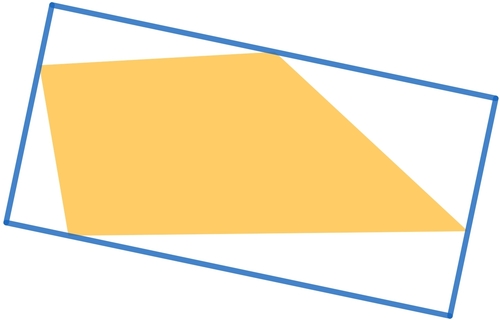Maximal Rectangle

Consider a quadrilateral whose diagonals have lengths and whose area is .
What is the maximum area of a rectangle that circumscribes the given quadrilateral?
This section requires Javascript.
You are seeing this because something didn't load right. We suggest you, (a) try
refreshing the page, (b) enabling javascript if it is disabled on your browser and,
finally, (c)
loading the
non-javascript version of this page
. We're sorry about the hassle.
Suppose that the diagonals of the quadrilateral make an acute angle α with each other, so that A = 2 1 p q sin α .
Consider a rectangle that circumscribes the quadrilateral. If the diagonal of length p makes an angle of θ with the side of the rectangle that it touches, then the rectangle must have height p sin θ and width q cos ( θ − α ) . so that the rectangle has area Δ = p q sin θ cos ( θ − α ) = 2 1 p q [ sin ( 2 θ − α ) + sin α ] = 2 1 p q sin ( 2 θ − α ) + A so that Δ ≤ 2 1 p q + A , with the maximum achieved when θ = 2 1 α + 4 1 π .